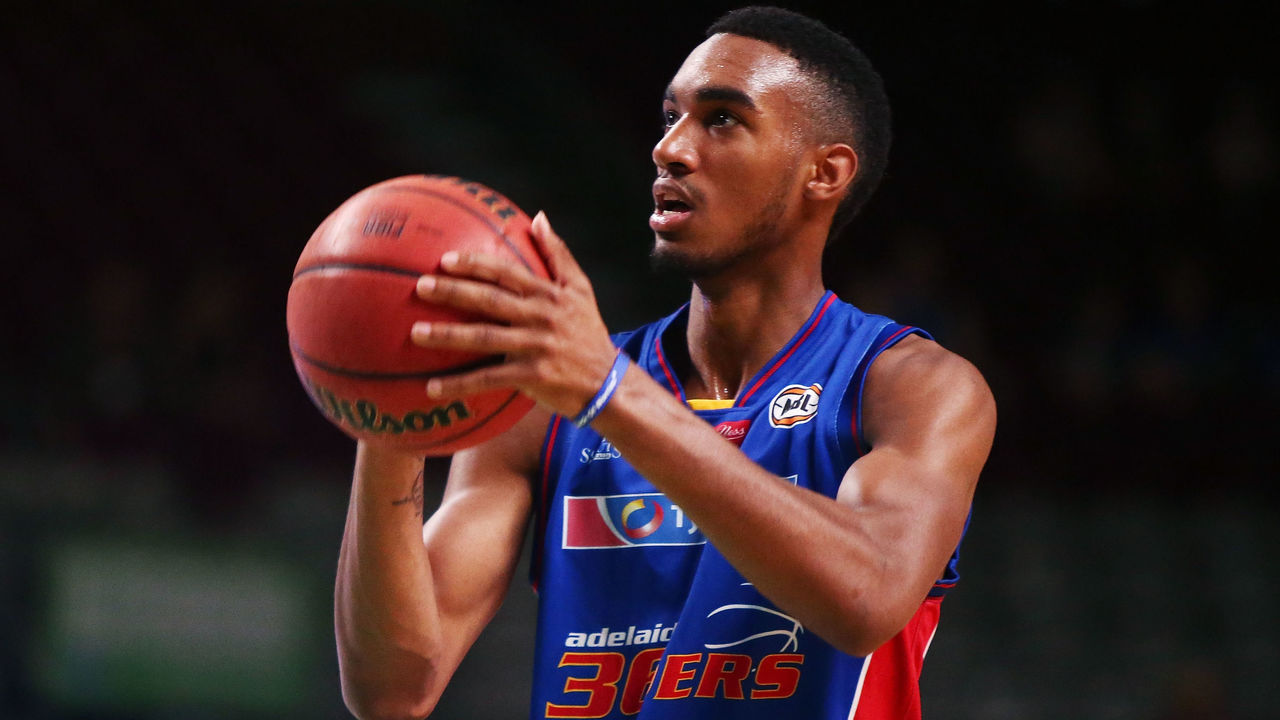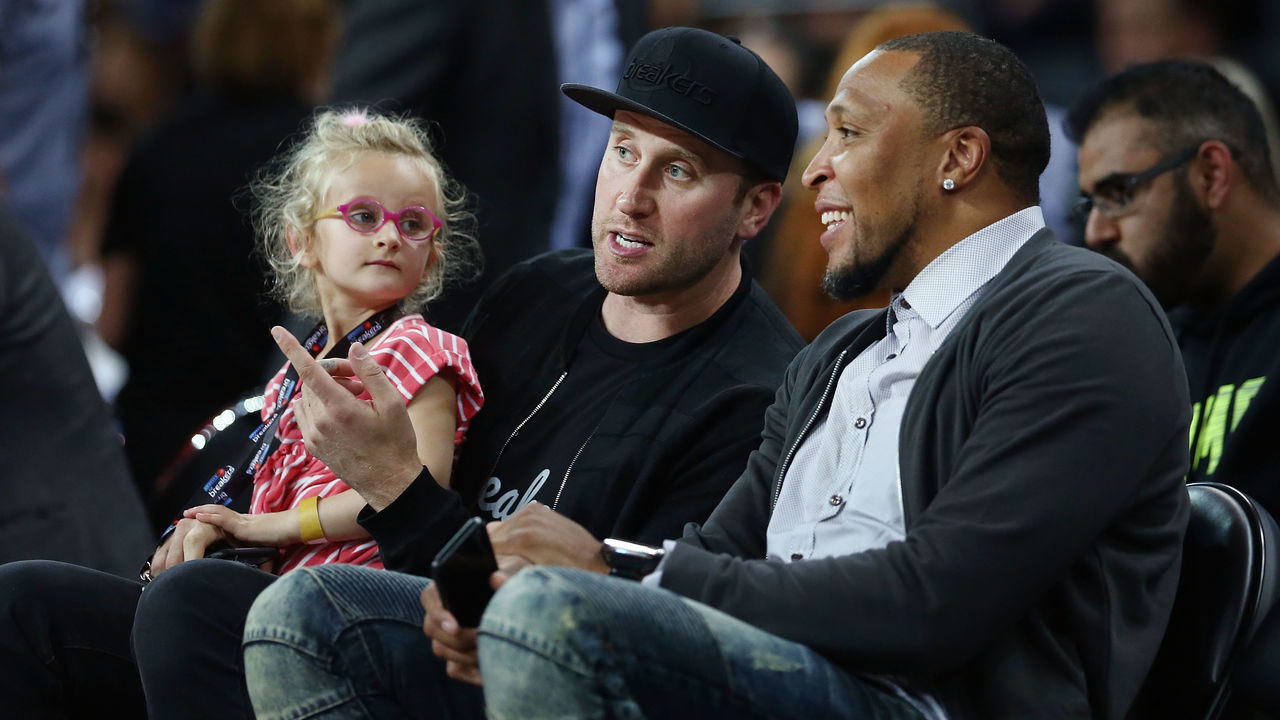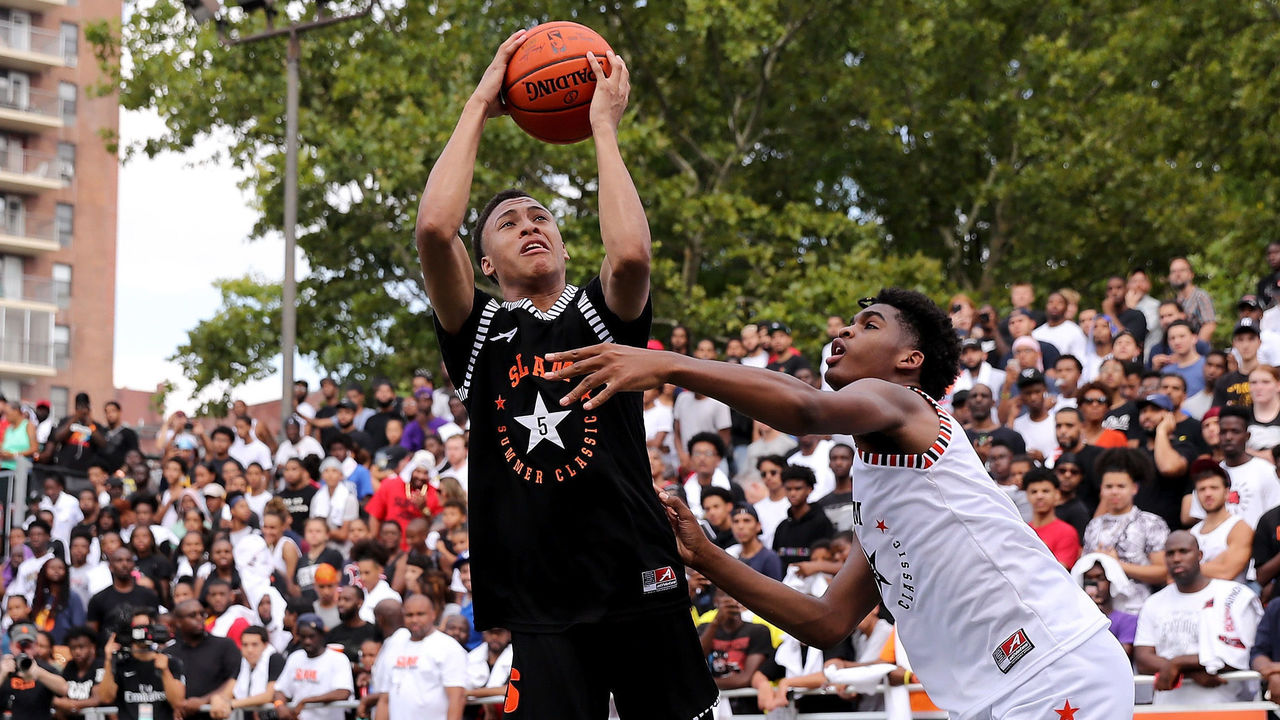RJ Hampton chose Down Under over college. What does it mean?
The process that led RJ Hampton to choose an Australian pro league over U.S. college basketball wasn't as foreign as the decision itself.
The New Zealand Breakers of Australia's National Basketball League (NBL) first learned about a year ago that Hampton - one of the top high school players in the United States - was open to the possibility.
Like Kansas, Memphis, and Texas Tech, they crafted a pitch.
"It was just like a college recruiting process," said Matt Walsh, part owner and CEO of the Breakers, in a phone interview on Tuesday. "I was very honest and up-front with them about what I think we have to offer, and I told him that if his No. 1 rule was to play in the NBA and be the first pick in next year's draft, I believe that coming and spending seven, eight months with us was the best route to do that. We were able to get them to see that vision as well."
The months of dialogue culminated with a commitment announcement that eschewed the traditional high school gym and a selection of hats for a blue suit and an appearance on an ESPN morning show.
Hampton, seated with Jalen Rose, Mike Greenberg, and Jay Williams on the "Get Up" set, told them he would go overseas to play for the Breakers - and was greeted with applause.
"I just think my dream has never been to play college basketball," Hampton told the hosts. "My dream has always been to get to the next level and play in the NBA. So, I think this was the best route for me to live like a pro and play with grown men every day, and not kind of have to juggle books and basketball, and focus on our main goal."
RJ Hampton (ranked No. 5 recruit in ESPN Top 100) will forgo college to play professionally in Australia's NBL. pic.twitter.com/xWmh7V5RaF
— Get Up (@GetUpESPN) May 28, 2019
Hampton, a native of Little Elm, Texas, is a 6-foot-5 guard who's the No. 5 overall player in the 2019 high school class, according to 247Sports. That makes him one of the top prospects for the 2020 NBA Draft.
In the NCAA's one-and-done era, Hampton will forever be linked to other players who bypassed college for a year overseas - names like Brandon Jennings, Emmanuel Mudiay, and Terrance Ferguson. Unlike some others, though, Hampton had no barriers - academic or otherwise - between him and the college of his choice.
"He could have went to Harvard if he wanted," Walsh said.
So, what does it mean for the future of basketball when one of the best high school players in the country chooses the other side of the world over a year of the college game?
An opening in the system
In 2016, Ferguson decided to play for the NBL's Adelaide 36ers for one year to prepare for the NBA.
The Oklahoma City Thunder drafted him 21st overall in 2017.

After Ferguson, the NBL decided to try and take advantage of the opening in the system. It created the "Next Stars" program, which is designed to contract overseas players and develop them with the NBA draft in mind.
Brian Bowen II, a former Louisville commit, later signed with the Sydney Kings for the 2018-19 season after the NCAA ruled him ineligible due to a scandal involving the Cardinal.
After averaging 6.5 points and three rebounds per game with Sydney, Bowen's now preparing for the 2019 draft, which will take place on June 20.
Overall, the NBL includes nine teams. Eight are located in Australia, while the Breakers play their home games in Auckland, New Zealand. Rosters are comprised mostly of Australian-born players, but a few American college alumni - including former UConn forward and first-round pick Josh Boone, and former All-Big Ten guard Melo Trimble - are spread across the league.
Walsh, the Breakers part owner, grew up outside of Philadelphia and played college basketball at the University of Florida in the early 2000s. He later spent a decade suiting up professionally in Europe.
Those experiences in college basketball and overseas put him in a unique position to inherit Hampton. (The Breakers' coach, Kevin Braswell, is also American and holds Georgetown's all-time assists record.)

"I know the stress of a family moving to a different country and culture shock and all the emotions that go with that," Walsh said. "So just going off my experience, we're going to do our best to really make RJ and his family feel at home, which I think we will, and we're looking at this as an amazing opportunity for the club to really showcase what we're about, so when RJ's playing in the NBA for the next 15 years, he looks at us and talks about us in a positive way."
Walsh added that the Breakers have quality facilities and will accommodate Hampton's family, who will also move to New Zealand for the seven months he'll be overseas.
Of course, Hampton will also be compensated. And he won't have to balance basketball with class.
"It was very clear, RJ's much more mature than I was at 18, that's for sure," Walsh said. "He's got a very clear vision that he wants to be the No. 1 pick in the draft and that he wanted to devote this next year 100 percent to that."

The death of one-and-done?
Walsh believes Hampton's decision could open the door for more top prospects to choose the NBL, which offers a year of professional basketball experience without the language barrier a teenager might experience in other countries.
At the same time, Walsh also knows the one-and-done rule that the NBL is taking advantage of might be on its last legs.
"I wish (the NBA) wouldn't, for our league's sake, but I think that they're going to have a hard look at the one-and-done rule," Walsh said. "Because as much as I'm sure they'll say 'This is just one player doing it,' I would imagine they're going to take a look and see if that rule needs to be revisited."
Those conversations are already happening. In February, the NBA reportedly submitted an official proposal to the players' association that would lower the draft-eligible age from 19 to 18 in time for the 2022 draft.
As such, it's clear that Walsh and others in the NBL have reason to be concerned. In 2005, the final draft before the one-year rule was instituted, nine NBA players were selected out of high schools or prep schools. Four of them were still on NBA rosters this season, including Gerald Green and Lou Williams. Before that, eight of the first 19 picks in 2004 came out of high school, including Dwight Howard at No. 1.
And since the rule change, players have found loopholes and alternatives - overseas and otherwise - putting pressure on the NBA to re-examine the age requirement.
For example, Thon Maker went straight from high school to the NBA in 2016 when he proved he graduated from the former in 2015. Last year, Anfernee Simons went straight from prep school to the NBA after spending a year at IMG Academy in Florida.
It's also clear that if Hampton was eligible for the 2019 draft, he'd be working out for NBA teams right now.
"If he could, he'd go right to the NBA," Walsh acknowledged. "And he's probably ready to do that. It'll be interesting to see how things shake out."
Big time congrats to one of the next stars from the DFW @rjhampton14 on making the best decision for HIM and HIS FAMILY! Respect! pic.twitter.com/yJebPypy2S
— marcus smart (@smart_MS3) May 28, 2019
The case studies
Assuming Hampton is selected in 2020, he'll become the fifth player to be drafted after graduating from a U.S. high school and then spending a season overseas since the one-year rule was implemented. (If Bowen is drafted this year, Hampton would become the sixth.)
Here's a look at how the previous four have fared:
Terrance Ferguson, Adelaide 36ers (Australia): Ferguson was the No. 16 player in the 2016 recruiting class when he chose to play in Australia. The 6-foot-7 guard averaged 4.6 points per game overseas and was later selected 21st overall by the Thunder in 2017. He started 74 games this season as a 20-year-old.
Emmanuel Mudiay, Guangdong Southern Tigers (China): Mudiay was considered the No. 2 player in the 2014 class when he moved to China. He only played in 12 games overseas, but averaged 18 points, 6.2 rebounds, and 5.9 assists. The Denver Nuggets drafted him seventh overall the following year, and he started 42 games for the New York Knicks this past season, averaging a career-best 14.8 points.
Jeremy Tyler, Tokyo Apache (Japan): Tyler actually left high school after his junior year, playing the 2009-10 season for Maccabi Haifa in Israel and then the 2010-11 season in Tokyo. He fell to the 39th pick in the 2011 draft, where the Charlotte Bobcats selected and traded him to the Golden State Warriors. Tyler appeared in 104 NBA games from 2011-14.
Brandon Jennings, Lottomatica Roma (Italy): Jennings was a top recruit and was committed to Arizona before choosing to spend the 2008-09 season in Serie A. He still became a lottery pick, going 10th overall to the Milwaukee Bucks, and he's since spent the better part of six seasons as a starter for the Bucks and the Detroit Pistons.